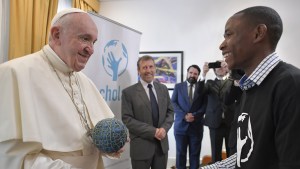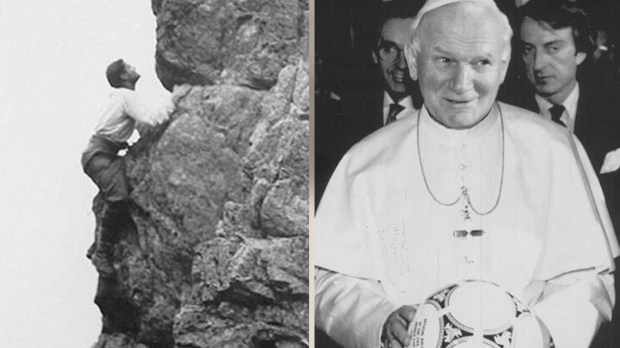For centuries, Catholic athletes have looked to St. Sebastian as their patron. A Roman soldier who was shot full of arrows and nursed back to health, Sebastian returned to preach the Gospel once more and was martyred for his troubles.
Though his perseverance in being “martyred twice” makes him a fitting patron for 5 a.m. workouts and ultramarathons, there’s no evidence that St. Sebastian took part in any organized sports. Fortunately for Catholic athletes, there are plenty of saints who have.
Blessed Chiara Badano (1971-1990) was a skier, a swimmer, and especially a tennis player. She loved to sing and dance and was known for her enormous smile. That radiant smile was undimmed when she got a diagnosis of bone cancer that pulled her off the tennis court and the dance floor and confined her to an oncology ward for the rest of her short life. Throughout her illness, she prayed, “Jesus, if you want it, I want it too.”
Blessed Benedict Daswa (1946-1990) was a South African convert to Christianity, a teacher, a principal, a husband, father of eight, and a soccer player. He was a great advocate of athletics as a means of keeping young people on track and trained other teachers to coach soccer, volleyball, and hockey as well. When the soccer team he had founded began to try to use witchcraft to win games, Benedict objected. Ultimately he quit the team and founded another, of which he was also manager. His stance in opposition to black magic later led to his martyrdom at the hands of his friends and neighbors.
Venerable Teresita Quevedo (1930-1950) was the captain of her high school basketball team and a tennis star. Though tremendously talented on the tennis court, she never managed to win a championship. In her senior year she was favored to win; worried that a victory would inflate her pride, Teresita asked the Blessed Mother not for a victory but for whatever would be most pleasing to Jesus. When she lost, Teresita was able to accept the outcome with such joy that her mother, on seeing Teresita’s face, assumed her daughter must have won.
Pope St. John Paul II (1920-2005) spoke frequently about the power of sports to help in the development of young souls, once saying, “Sports contribute to the love of life, and teach sacrifice, respect and responsibility, leading to the full development of every human person.” This was no mere theory, of course. Pope John Paul was an avid skier, an outdoorsman who loved hiking and fishing, and an athlete for whom staying active was so important, he actually had a swimming pool installed at his summer residence so he could stay fit. When some cardinals questioned the expense, he joked that it was cheaper than another conclave.
Blessed Pier Giorgio Frassati (1901-1925) loved climbing mountains—photographs show him in decidedly precarious positions—riding horses, and skiing. He smoked cigars and short-sheeted beds. He had fistfights with fascists, served the poor, enjoyed the theater, and sneaked out of the house to attend daily Mass. Finally, he died of polio, contracted from those he was serving.
St. Teresa of the Andes (1900-1920) was a Chilean girl who loved swimming (pool and ocean) and horseback riding; her brother said her wild riding made her look like an Amazon goddess. Teresa played tennis and croquet, loved singing and playing the guitar, and was an excellent dancer. Though she struggled with her temper and stubbornness, she followed a call to Carmel and became a nun. Before she had been there a year, she died of typhus.
St. Philip Evans (1645-1679) was a Welsh Jesuit ordained in Belgium and sent back to Wales to serve as an undercover priest. After he was arrested for the crime of being a priest, he spent his time in jail playing the harp and playing tennis. When a jailer was sent to inform him that his execution had been set for the next day, interrupting his tennis match to take him back to prison, Fr. Evans responded, “What haste is there? Let me first play out my game.” This he was allowed to do, but the next day he was taken to his death.
Though there’s no record of St. Jean de Brebeuf (1593-1649) playing organized sports, he was the one to give the game of lacrosse the name by which it’s been known for centuries. It’s not hard to imagine the strong priest joining in the game as a way to build relationships with the Huron people he was evangelizing in Canada. His people had nicknamed him “Echon,” the strong one, and were floored by his physical strength in bearing burdens and rowing their canoes. Even the Iroquois who martyred him were amazed at his courage and endurance under torture, eating his heart after his death in an attempt to absorb his strength.

Read more:
Pope says he played with a homemade soccer ball as a kid: Leather balls were expensive

